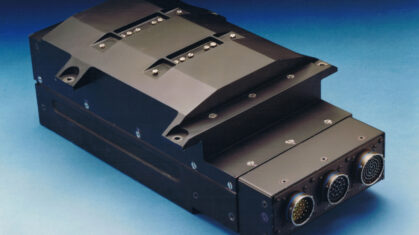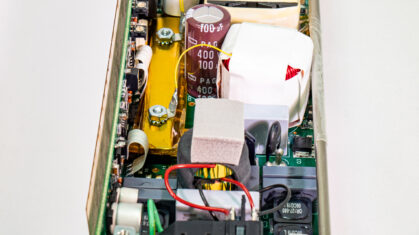
Capabilities
01. PCB Assembly: SMT & Thru Hole

Forte Micro operates multiple automated assembly lines that can place components on both sides of ceramic, organic (FR4, Getek, flex, rigid-flex, Rogers), Package-on-Package (PoP) and metal (IMS) printed circuit boards. Four fully automated SMT lines provide sufficient capacity to scale relatively complex products at high volume.
Component sizes range from 01×005 passives to large area BGA’s.
Depending on the product type (surface mount or thru-hole), the boards will be reflowed in an eight zone convection oven or wave soldered to achieve optimal component attachment.
Lead-free soldering is part of our standard manufacturing process in applications requiring compliance with the European Union Directive 2002/95/EC: Reduction of Hazardous Substances (RoHS). Our operations utilize water-soluble and no-clean processes as well as rosin-based fluxes that are cleaned with an environmentally compatible cyclic alcohol-based solution.
All production areas incorporate Electrostatic Discharge (ESD) controls to ensure components are protected during manufacturing.
02. Thick Film Hybrid Substrates

Forte Micro operates two highly automated print and dry islands that can deposit different metal systems on the surface of the substrate.
Substrate materials include 96% alumina or aluminum nitride.
Capabilities include printed through-hole and fine-line conductors, resistors, and dielectric materials on panel sizes up to 5” X 6” (125 X 150mm). We can manufacture multilayer construction (up to 8 layers) with multiple prints on each layer to achieve specific customer requirements. Passive laser trimming can customize specific resistor values to extremely tight tolerances. The process is controlled with real-time SPC.
Case Studies
Thick Film Manufacturing03. Systems Assembly

We offer a full spectrum of system and subsystem integration services, including assembly and testing. We build enclosures that include controller boards, power supplies, fans, UPS, displays, cable harnesses and other components. The final product can be configured to specific requirements and delivered directly to the end-customer. We develop product-specific manufacturing processes utilizing manual, semi- or fully-automated lines to meet our customers’ product volume and quality requirements.
Case Studies
Library Media Kiosk for Dispensing DVD’s04. Power Supplies

Forte Micro has teamed with Power Supply Concepts to design and deliver high-performance customized power supplies. Our engineers designed the light-weight and ultra-reliable power supply used by the Panavia Tornado ADV interceptor, which served the Royal Air Force and Italian Air Force, as well as the nuclear-hardened power supply of the M1 Abrams battle tank in the United States Army.
We also design ultra-low noise and high-efficiency power supplies for communications systems. Our power supplies can withstand extreme temperatures and environments for mission critical applications.
05. Precision Machining

Forte Micro is equipped to provide customers with the following services in-house for seamless and efficient contract manufacturing:
- 3-Axis CNC milling
- CNC lathe
- Manual milling
- PCB panel routing
- Sheet metal cutting & forming
- Quick turn prototypes, internal production tooling and fixturing needs
These capabilities allow us to provide our customers with a one-stop solution for subsystem assembly, box build, and systems integration. Additionally, when tooling or equipment breaks occur, we can internally analyze root causes of problems, respond quickly and effectively, and resume production as soon as feasible.
06. Special Processes

Forte Micro offers numerous special processes in-house to provide customers with seamless and efficient contract manufacturing.
Chip-On-Board / Wire Bonding
An ultrasonic or thermosonic welding process that uses aluminum or gold wire to make electrical connections between a bare die and substrate. Ball, ribbon and wedge bonding are available options to meet various performance requirements.
Types of wire bonding
- .001” – .003” Fine Aluminum Ultrasonic Wedge
- .001” – .003” Thermosonic Gold Wedge
- .001” – .002” Thermosonic Gold Ball Bonding
- .001” – .010” Thermosonic Gold Ribbon Bonding
- .005” – .020” Heavy Aluminum Ultrasonic Wedge
Types of substrates bonded
- Gold flash PCB, Duroid
- Aluminum bond pads on PCB, GETEK
- Alumina with Gold or Silver Thick Film
- LTCC with Gold or Silver
Vacuum Reflow
A unique die-attach process that utilizes fluxless solder and specialized fixturing to achieve uniform heat distribution. This results in void-free soldered joints. Several solder materials are available to meet specific customer requirements.
Epoxy Die Attach
This process attaches an unpackaged silicon die directly onto the substrate using an epoxy adhesive. It is typically followed by wire bonding and encapsulation of the die using a conformal coating material.
Conformal Coating
Conformal coatings are applied to finished printed circuit board assemblies to impart water repellency, prevent moisture damage, and corrosion protection. When properly applied, the coating will not negatively impact components mounted on these circuits.
- Silicone
- Modified silicone
- Humiseal
- Urethane
- Acrylic
Encapsulation & Underfill
When electronic components are mounted on a printed circuit board and exposed to harsh environments such as humidity, salts, corrosive materials in different concentrations and mechanical vibration, it can lead to rapid component and/or circuit board failure. To minimize this from happening, the top surface of a device, such as a bare die, flip chip or in other instances, the entire top surface of the board, is encapsulated to protect fragile interconnects against these undesirable environmental influences. In addition, encapsulating materials serve to neutralize dissimilar Coefficient of Thermal Expansion (CTE) values between the component and board.
Underfill is a polymer or liquid applied to the PCB after the component has been reflowed. The purpose of underfill is to cover the fragile interconnects between the chip’s bottom side and the top side of the PCB. When underfill is used, mounting conventional CSP and BGA packaging onto the board using conventional assembly methods will provide improved mechanical and thermal properties of that assembly.
Selective solder
To achieve lower assembly costs, Forte Micro can solder selected areas of printed circuit boards that are populated with through-hole components.
Active and Passive Laser Trimming
Passive laser trimming is performed on printed resistors on thick film substrates to achieve a specific resistor value within a tolerance range. Similarly, active trimming is performed after SMT assembly while the board is under testing to achieve a specific resistor value.
3D Printing
3D printing uses a computer-aided design (CAD) to create three-dimensional objects through a layering method. Sometimes also referred to as additive manufacturing, 3D printing involves layering materials, like plastics, composites or bio-materials to create objects that range in shape, size, rigidity and color.




